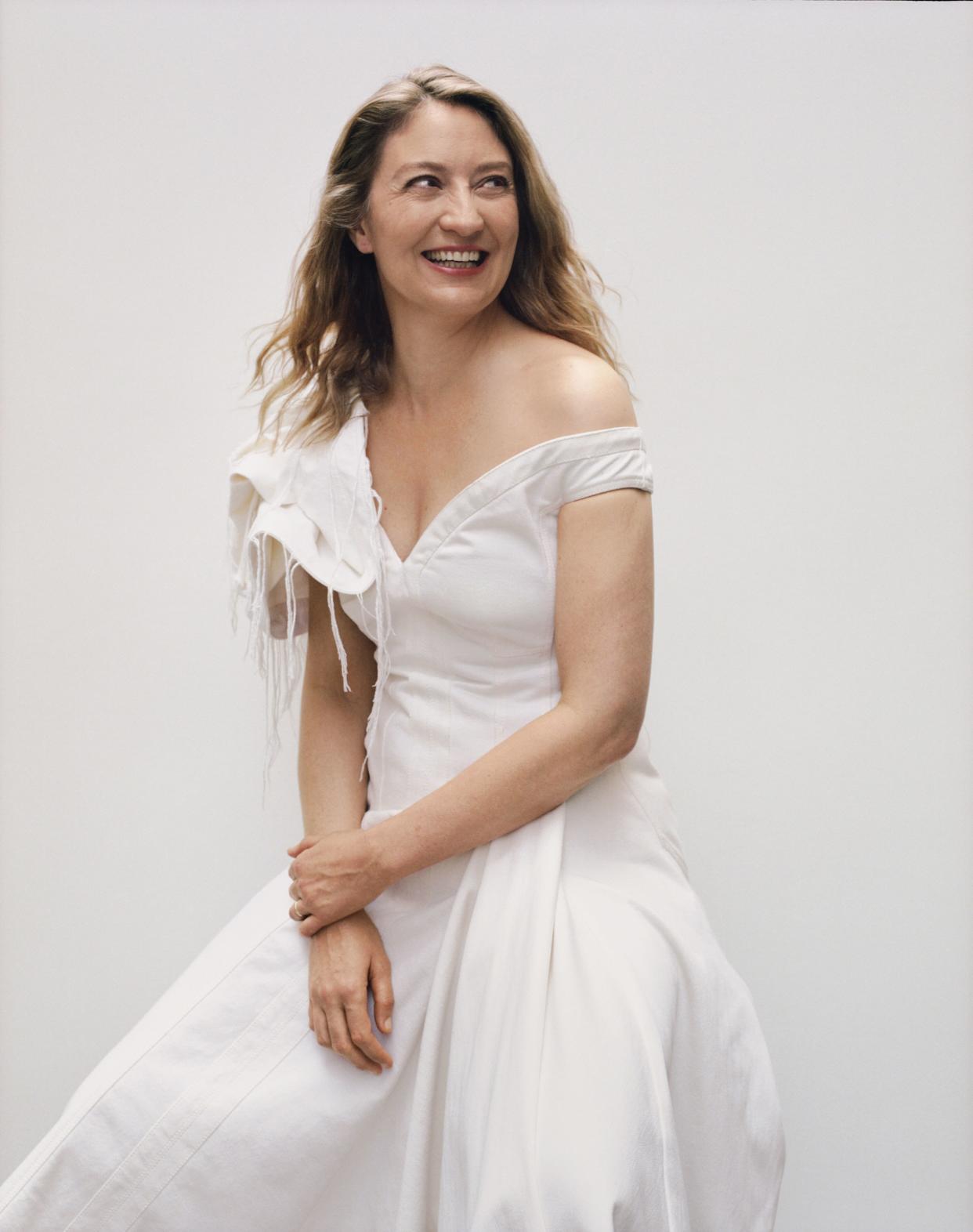Heidi Schreck Is Giving New Meaning to Political Theater

IT’S OFTEN SAID that the upside of dark times is that they produce great art. “I would much prefer to have bad art and live in good times,” says the writer and actor Heidi Schreck. Coming from her, this assertion is a bit rich—and Schreck knows it, laughing at her own words. We’re meeting at a café near Manhattan’s Helen Hayes Theater, where her extraordinary play, What the Constitution Means to Me, has been holding audiences rapt, both a critical and word-of-mouth hit.
Over the last two-plus years—not uncoincidentally the span of the 45th presidency—the show has migrated from a tiny downtown theater to California’s Berkeley Rep to Broadway, with the latest production earning Schreck an Obie award for Best New American Play and two Tony Award nominations. As boisterous and open-hearted offstage as she is on, Schreck can’t suppress a watery reddening of her eyes as she considers the impact that her show has had. “I get a lot of women who come back a second or third time and bring their daughters or mothers,” she says. “I never thought I’d be getting whole families!”
A de facto one-woman production, with only a couple of strategically timed walk-ons by other performers, it finds Schreck doing aloud what many of us have, of late, been doing in the privacy of our own minds: questioning the bedrock assumptions that we have long held dear about the United States of America. In the play, the 47-year-old Schreck reconsiders her childhood as an oratorical prodigy from Wenatchee, Washington, who won speaking competitions by exalting the U.S. Constitution. On a set decorated to resemble the wood-paneled American Legion halls in which she competed as a youth, Schreck comes to the conclusion that her teenage crush—the 1787 document—maybe isn’t so dreamy after all. Drawing upon raw personal history, she details how her own family has been affected by the institutional biases against women that the Constitution helped perpetuate.
What the Constitution Means to Me is an audacious piece of art that somehow goes down easily—a testament to Schreck’s offbeat candor. Much of the play, surprisingly, was written before the 2016 presidential election. “To me,” says Schreck, “that speaks to the fact that what’s happening now"—the post-Obama backslide into patriarchal illiberalism—“is not necessarily an aberration. I do think, though, that the moment we’re in made the play more necessary.” Tellingly, among those who have come to see the show are Hillary Clinton and Ruth Bader Ginsburg.
Though she had been developing the play since 2007, it wasn’t until fairly recently that Schreck, a successful TV writer, felt the pull to return to her first love, the stage. (She and her husband, the theater director Kip Fagan, met in their 20s as members of an upstart theater company in Seattle called Printer’s Devil. They currently live in Brooklyn, on the second floor of a town house they rent from close friends.) “I think I felt a kind of freedom being in my 40s,” Schreck says, “where I was like, ‘You know what? Why don’t I just try something new?’”
Her gamble has been so successful that two TV writing projects—an Amazon series based on Patricia Lock- wood’s 2017 memoir Priestdaddy and a series for Hulu based on Joan Didion’s California writing—are on hold while she deals with Constitution-mania. Next month, after winding up its Broadway run, the play will move to the John F. Kennedy Center for the Performing Arts in Washington, D.C. There are plans afoot for further productions that will feature other actors in the role of Heidi; the first of these will open in Los Angeles in January. “The truth is that any actor who plays this part will have stories from her own life that relate to the 14th Amendment, since that amendment covers reproductive rights, sexual and physical violence, equal protection under the law, citizenship, and the right to vote,” says Schreck. “So every new production will be kind of a living document."
Originally Appeared on Vogue

